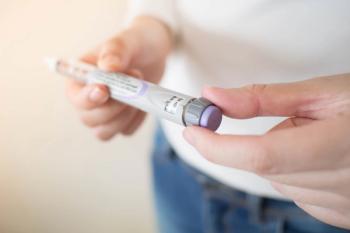
Empowered patients boost outcomes with Project IMPACT: Diabetes
Regardless of their income, employment status, and access to resources, patients want to support their health, and pharmacists can help them do it.
Project IMPACT: Diabetes, a national research initiative conducted by the American Pharmacists Association (APhA) Foundation, has demonstrated that community-based interdisciplinary teams of providers that include pharmacists can help improve clinical outcomes for adult diabetes patients who are uninsured, underinsured, homeless, and/or living in poverty.
Taking as its guide a model that worked with self-insured employers on initiatives such as the Asheville Project and Diabetes Ten City Challenge, the APhA Foundation applied the same principles to Project IMPACT: Diabetes, which included more than 2,000 patients from 25 communities throughout the United States who are underserved or highly affected by diabetes.
Pharmacist/patient collaboration
In order to assess patients’ baseline knowledge and tailor their care to meet individual goals, pharmacists provide one-on-one consultations with patients. Pharmacists monitor patients’ glycosylated hemoglobin (HbA1c), low-density lipoprotein (LDL) cholesterol level, systolic blood pressure, and body mass index (BMI), and advise on appropriate medication use, nutrition, exercise, and other lifestyle changes that are factors in helping patients manage this chronic disease.
“This patient-centered model of collaborative care teams helps patients gain the knowledge, skills, and ability to become effective self-managers of their diabetes,” said Benjamin M. Bluml, RPh, APhA Foundation’s senior vice president for research and innovation, who designed and led the project.
“Across all the communities that participated, we have seen the common thread of physicians, pharmacists, and other healthcare professionals being willing to work together as a team, with the focal point being the results - improving patients’ diabetes outcomes. It has been very positive,” said Bluml, whose organization provided the necessary tools, resources, and guidance for the project.
Interim results
In the study, most of the participating patients were women (58.3%) with an average age of 53.8 years. More than 40% were Caucasian, almost 25% were African American, more than 20% were Hispanic, and the rest were Native American, Asian, Pacific Islander, or listed as other or not specified.
The 6-month interim clinical results through July 31, 2012, showed statistically significant improvements in HbA1c, LDL cholesterol level, systolic blood pressure, and body mass index (BMI) from baseline in participating patients. Mean interim HbA1c was 8.3%, a drop of -0.7% from baseline. Mean LDL cholesterol also decreased, from 99.5 mg/dL to 92.2 mg/dL, a change of -7.3 mg/dL. Mean systolic blood pressure dropped -1.9 mm Hg from a baseline of 131.8 mm Hg to 129.9 mm Hg. Mean BMI at baseline was 35.1 units and decreased to 34.9 units at the 6-month point.
Teaching self-management
At the beginning of the project, the APhA Foundation offered pharmacists training and tools to help them assess patients’ baseline knowledge and develop customized education plans for each diabetes patient. The project used the Patient Self-Management Credential, a 36-question assessment tool, to identify patients’ real strengths and weaknesses as they relate to medication management, meal preparation, and lifestyle issues. The patient and pharmacist together set specific goals important to that individual patient.
“Managing this chronic disease is a significant challenge and we have to find smarter, more effective ways to work together as healthcare providers, patients, and members of a patient-centered interdisciplinary team that is going to be effective in helping patients to achieve their clinical outcomes and goals,” Bluml said.
According to Bluml, this project has demonstrated that health is a concern for patients, regardless of where they live and whether they are employed or unemployed and have access to foods or not, and pharmacists can play a particularly important role in diabetes care for these vulnerable populations.
“It is our job as healthcare providers to use our unique skill set and knowledge base to empower patients we are working with to take the next steps to become more effective self-managers,” Bluml said. “Patients have to understand that the dietary choices they are making, the lifestyle choices, and the medication choices have an impact on their health and long-term well-being.”
Project IMPACT: Diabetes was developed as part of the Bristol-Myers Squibb Foundation’s Together on Diabetes five-year initiative that was launched in November 2010. Its goal is to improve health outcomes of adult patients with type 2 diabetes who are living in China, India, and the United States.
Newsletter
Pharmacy practice is always changing. Stay ahead of the curve with the Drug Topics newsletter and get the latest drug information, industry trends, and patient care tips.























































































































